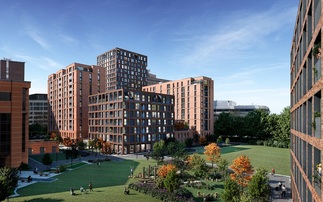M&G Real Estate asks what would a world of rising rates mean for pension schemes investing in real estate
By: M&G Real Estate
The Bank of England is widely expected to raise interest rates next year. So what does that mean for pension funds and other income-seeking investors? Bond yields are likely to increase along with interest rates, but the moves in both are forecast to be modest and gradual.
At the same time, the historically wide spread between yields on real estate and on bonds leaves scope for the gap to narrow without compromising the relative attraction of property investments. Our research suggests that real estate offers attractive income and prospective total return compared to bonds, including on a risk-adjusted basis, and is likely to continue to do so over the medium term.
Recovery story
The recovering UK economy, a key condition for the expected rate hikes, also bodes well for property. Gross domestic product growth this year is forecast at 3.1% according to Capital Economics- its strongest since before the financial crisis, and higher than for any other G7 country. Demand drivers have picked up, sentiment has improved and real wages are finally starting to recover. The positive economic picture is feeding into rental growth - supporting the key income element of real estate returns.
Encouragingly, the current cycle has been largely fuelled by equity rather than debt. Levels of leverage and supply are both significantly below levels seen prior to major property price reversals over the past 30 years. While this does not in itself prevent a market correction, it does perhaps suggest a more conservative property valuation environment.
On the supply side, meanwhile, most regional markets are not forecast to experience significant commercial property development in the next few years. Vacancy rates are low and falling in most sectors in London and the regions.
Favourable yield spreads
Real estate yields continue to look attractive compared to those on offer in other asset classes, such as bonds (both government and corporate), and are expected to remain so in the medium term. In our view, this is likely to support investor appetite for - and consequently prices on - commercial property.
Although yield spreads between property and benchmark 10-year gilts have moderated, they still remain significantly above the historical average, by approximately 150 basis points.

Historical analysis
Our historical analysis suggests there is no clear cut relationship between movements in prime property yields and bond yields or official interest rates. Although both are affected by swings in the economic cycle and the accompanying changes in the Bank of England's (BoE) benchmark interest rates, the relationship is muddied by asset-specific market drivers, such as supply.
Correlation analysis and linear regression both show a generally weak relationship between prime property yields and bond yields or indeed official interest rates. The link is stronger, though still moderate, for average or ‘secondary' property, which tends to have less of a ‘safe haven' status than the best quality prime assets, to see less demand from foreign investors, and to generally have greater availability of stock.
Clearly a relationship exists, but it is not strong enough to ensure that the yields on the two asset classes move in tandem. For example, in 11 of the past 22 years both prime and IPD (average) office yields moved in the opposite direction from 10-year gilt yields. In other words, a rise in bond yields does not necessarily imply a concurrent rise in property yields.
Further multivariate regression analysis also reveals that, in an environment where business investment is strong, the upwards pressure exerted on commercial property yields by interest rate rises may be dampened or mitigated, due to beneficial risk appetite and rental effects.
Overall, looking ahead, prime UK real estate is likely to be supported by continuing foreign capital flows and its safe haven status, while benefiting from the positive economic and occupier market developments. Secondary property is potentially more vulnerable, according to our regression analysis, but here too we expect values to be supported by the economic recovery and improving rental fundamentals.
Among the sectors, our research suggests that retail may be the most at risk from rising interest rates and bond yields. The outlook for rental growth is not as strong as offices or industrials as the sector faces headwinds, including the still weak real wages and the increasing impact of the internet on physical store sales (especially for the high street). However, although store rationalisation is ongoing, its pace has eased and the low overall supply pipeline is supportive of rental growth.
In conclusion, any rise in gilt yields will be commensurate with an improving economy, and that is supportive of property pricing and yields. Corporate balance sheets are in good shape, credit risk has improved and business confidence is stable. It is therefore our view that UK commercial property is in a strong position to withstand gradual rate hikes over the next few years - and indeed to remain as a key source of income for investors.






